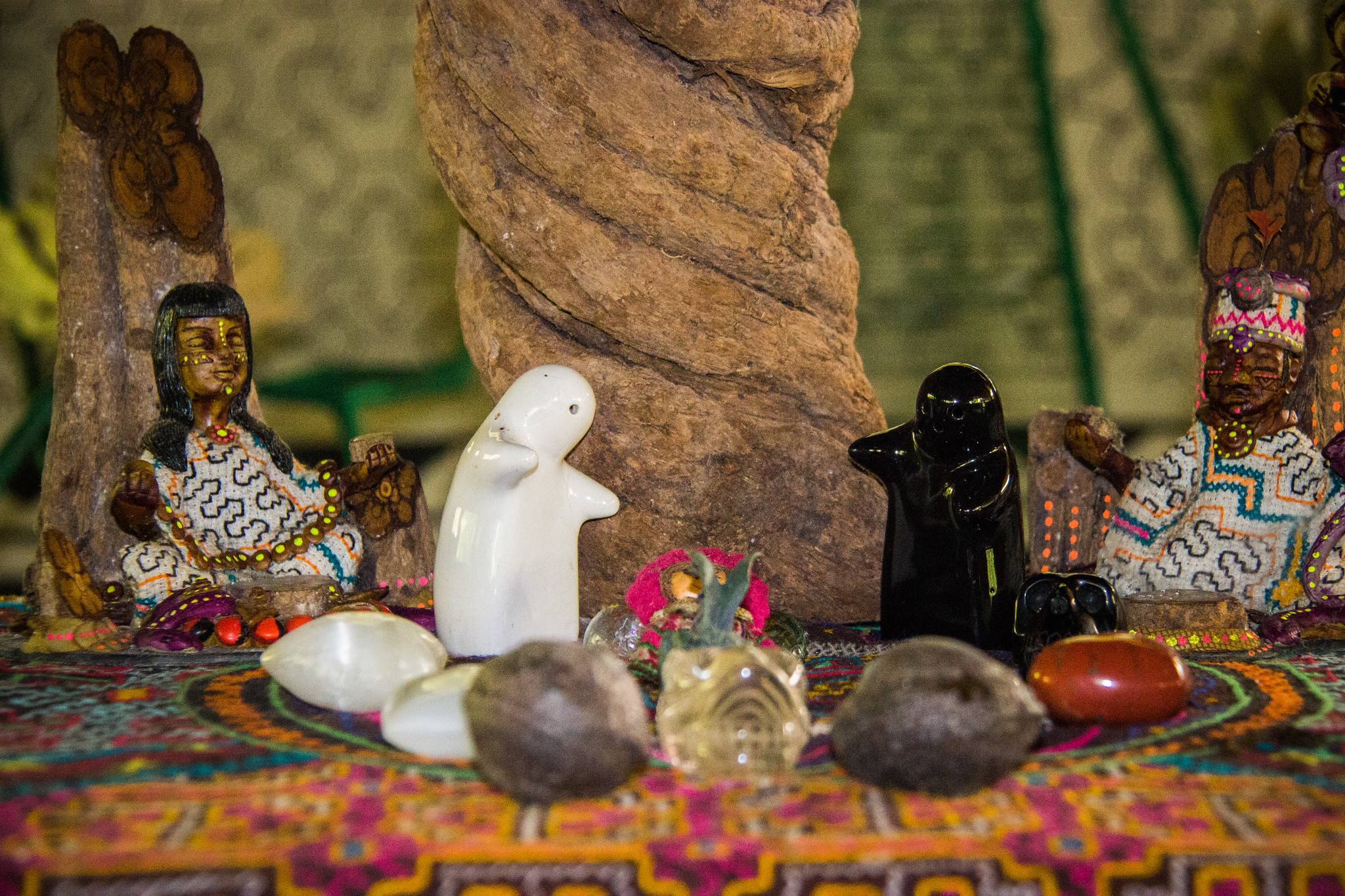The Global Mental Health Movement (GMHM) has gained traction in the last few decades as it attempts to bring psychiatric treatment to the Global South. A new opinion piece published in the Harvard Health and Human Rights Journal suggests that there might soon be a “U-turn” where traditional indigenous healing practices and psychoactive plants are imported into the Global North.
The authors, José Carlos Bouso and Constanza Sánchez-Avilés of the International Center for Ethnobotanical Education, Research, and Services (ICEERS), note that despite claims that the Global North’s respects indigenous forms of mental health treatments, the underlying assumptions create a hostile environment for these forms of healing. Other researchers have pointed to similar hypocrisies within the GMHM reports. The authors write:
“The GMH paradigm could lead to a turning point where, contrary to the assumption that the Western mental health model should and will expand, we are instead witnessing the expansion of traditional forms of healing beyond their native contexts.”

While the GMHM remains popular, it has also encountered sustained critique. These criticisms include the movement’s disregard for local forms of treatment and healing and the devaluing of socio-structural causes of mental distress, such as poverty. The movement has also been questioned by researchers who have problematized the mental health field’s racist roots and colonial agendas.
The authors note that while the GMHM has addressed the importance of traditional healing practices, it has only considered them as an add-on to the normative and mainstream Western biomedical model. They write that since these indigenous practices are premised upon a different understanding of health and healing, they must be evaluated on their own terms. In other words, what has been considered legitimate knowledge differs among places and people. As a result, measuring and assessing indigenous practices based on criteria created by the Global North is problematic.
One of the central human rights the GMHM proposes is the right to evidence-based treatments, and the right for people to receive the fruits of scientific progress. The writers note that these rights are impinged upon when traditional healing practices, such as the use of ayahuasca in indigenous communities, are criminalized.
Ayahuasca is a psychoactive brew, usually made from the leaves and vines of Sychotria Viridis shrub and Banisteriopsis Caapi vine. It is often used in Amazonian medicine. DMT in ayahuasca is a Schedule 1 controlled substance. It should be noted that the evidence-based treatments that the GMHM aims to export have also come under recent scrutiny for their poor performance on different metrics.
The authors note that both the medical model and indigenous practices involve the use of psychoactive substances such as ayahuasca, or antidepressants, and antipsychotics. Ayahuasca has become increasingly popular in the West but is often vilified in the scientific literature for its dangerous effects. More recently, psychiatric drugs have also come under scrutiny for their long-lasting adverse effects.
While the biomedical model posits that mental disorders are caused by biochemical anomalies to be fixed by psychiatric drugs, Amazonian medicine considers psychoactive substances to be a mediator and harmonizer between a person, the community, the geography, and the spiritual world.
The GMHM considers traditional psychoactive plants to be medicinal only if clinical trials are used to measure their safety and efficacy. On the other hand, for many traditional practitioners and users, the proof of safety and efficacy lies in their use by a community for long historical periods. In other words, the Global North only considers these practices valid if they satisfy the scientific method, whereas the process of evaluation used by many indigenous communities is different.
The authors write that these different knowledge systems approach the causes and nature of suffering and distress differently. Thus, the method that is used to test their validity should not merely be the one developed in the Global North. Recent research has also shown that the scientific process upon which clinical trials are based is itself rife with problems, such as pervasive corruption by industry and bias caused by overdependence on randomized controlled trials.
Different global governing bodies insist that people have a right to health and to benefit from science. Still, a focus on Western forms of knowledge leaves indigenous practices in the lurch, especially when it comes to the use of psychoactive substances. Thus, many groups can be deprived of the freedom needed to research these substances.
The authors suggest the use of ethnographic research as a solution, which involves studying people in their environment. They write that it is a relevant and valid way of conducting studies on the use and safety of psychoactive plants.
A human rights approach premised on the right to science may appear neutral but can be influenced by many historical and ongoing colonial biases. While traditional practices are evaluated using scientific criteria, the same scrutiny is not applied to many drugs and practices that emerge from the Global North. The authors give examples such as psychoanalysis, various psychological approaches, and even the bio-centric model, which has failed to explain the etiology of any form of mental disorder. They write:
“Science applied to mental health demands that other disciplines and epistemologies meet methodological criteria that psychiatry itself does not always fulfill. A broader framework regarding the assessment of mental health systems should be developed in which different epistemological approaches, including indigenous ones, are considered.”
The authors suggest that globalization is not a one-way street, as evidenced in the popularity of ayahuasca and other psychoactive plants in the West, where they are being used for self-care practices. Additionally, Westerners often go to Amazonian regions to participate in ceremonial practice to heal from physical and psychological suffering, and for other spiritual encounters. Lastly, nascent research on these psychoactive plants has found them useful for depression, addiction, and post-traumatic stress, among other disorders.
The authors thus predict a turning point in globalization where traditional practices from Amazonian regions and other places will become increasingly popular in the Global North, despite the injunctions of international drug regulatory agencies. They add:
“Amazonian health systems, based on a world view that appreciates alignment between the individual, the community, the ecosystem, and the geographical territory, may serve as a model for dealing with our mental health crisis that, with the climate emergency and the COVID-19 pandemic, will dramatically increase.”
They conclude by insisting the GMHM must truly consider traditional practices as legitimate forms of knowledge and not merely show superficial respect to assuage cultural sensitivities. This would include allowing ethnographic data to evaluate the efficacy and safety of psychoactive plants, additional funding to enable multidisciplinary research into these options, and genuine respect for these indigenous knowledge systems.
****
Bouso, J.S. & Sánchez-Avilés, C. (2020). Traditional healing practices involving psychoactive plants and the Global Mental Health agenda: Opportunities, pitfalls, and challenges to the ‘Right to science’ framework. Health and Human Rights Journal, 22 (1), 145-150. (Link)















“contrary to the assumption that the Western mental health model should and will expand,” I found that psychiatrists and psychologists tend to make a lot of incorrect assumptions. And when people make assumptions, they do tend to make an ass out of themselves, as well as the person about whom they made the incorrect assumptions.
“The movement has also been questioned by researchers who have problematized the mental health field’s racist roots and colonial agendas.” Don’t forget the extreme misogyny and paternalism that runs rampant within the “mental health” field.
“It should be noted that the evidence-based treatments that the GMHM aims to export have also come under recent scrutiny for their poor performance on different metrics.”
Like, for example, the fact that the ADHD drugs and antidepressants can create the “bipolar” symptoms? And the antidepressants and antipsychotics can create “psychosis,” via anticholinergic toxidrome? Plus the antipsychotics can also create the negative symptoms of “schizophrenia,” via neuroleptic induced deficit syndrome? Meaning that both “bipolar” and “schizophrenia” are iatrogenic illnesses, created with the psychiatric drugs.
“While the biomedical model posits that mental disorders are caused by biochemical anomalies to be fixed by psychiatric drugs,” despite the fact their “chemical imbalance” theory was debunked decades ago.
“The authors give examples such as psychoanalysis, various psychological approaches, and even the bio-centric model, which has failed to explain the etiology of any form of mental disorder.” Yet us independent psychopharmacological researchers have found the iatrogenic etiology of the two “most serious mental illnesses.”
Report comment
“While the biomedical model posits that mental disorders are caused by biochemical anomalies to be fixed by psychiatric drugs…..”
Well they got the “mental disorders” wrong from the get-go, so anything that follows will be and is wrong.
So now we are left with dismantling this big hoax and start from scratch.
They never uncovered that “IT” does not reside in that individual. Or perhaps they have caught onto that, but refuse to let go, since the hoax got out of control.
It is difficult to reign in a monster, especially if you are that monster.
Report comment
I find no great reassurance in this news!
Even if “indigenous” treatments arrive in the Global North, is is doubtful that the context in which they are used in the Global South will also arrive.
For instance, the coca leaf has been used traditionally as a stimulant (a little like coffee) for people working at high altitudes or for long hours. While coca’s derivative, cocaine, is used in the West as a street drug – an escape from reality.
The urban West (as I am used to calling the Global North, since we often remove much of Asia from that territory) has a different approach to drugs than the traditional rural peoples of the Global South.
Furthermore, Latin America has a bad drug abuse problem, too. As does Africa, apparently mostly from stolen (or smuggled) pharmaceuticals.
So, we can introduce yet more drugs into the “mental health” scene here is the U.S. and elsewhere, on the basis that they are somehow “more natural” than the ones we use now (although there is also a push in the U.S. to reintroduce LSD as a therapeutic drug) when what the planet really needs is to get off drugs.
“Traditional forms of knowledge” have left us with no particular advantage in facing the challenges that lie ahead. And the “tradition” in the West has been to strip out what workability they did have by ignoring original context. By the time Buddhism arrived in the West, it was Christianity! I don’t think traditional healing methods will fare any better here.
Report comment